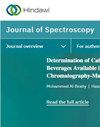Nano-Scale Secondary Ion Mass Spectrometry: A Paradigm Shift in Soil Science
IF 2.1
4区 化学
Q4 BIOCHEMICAL RESEARCH METHODS
引用次数: 0
Abstract
Soils exhibit structural heterogeneity across diverse spatio-temporal scales, yielding myriad of microhabitats, highlighting the need for a nuanced understanding of the intricate interactions within the soil matrix. At the nanometer scale, the interplay among organic matter (OM), mineral particles, and microbiota intricately govern the long-term destiny of soil carbon (C), nutrient cycling, and the fate of both organic and inorganic pollutants. Notably, the sorption of soil organic matter (SOM) onto smaller clay particles and its entrapment in microaggregates further contribute to this complex dynamic. Understanding these processes depends on recognizing their scale-dependent nature, necessitating sophisticated techniques for investigation. Although various methods are employed across scales, the current set of techniques still lacks the requisite sensitivity and resolution for microscale data collection. To address this limitation, the adoption of novel microscopic and spectroscopic techniques capable of probing molecular, isotopic, and elemental patterns at the micro to nano scale becomes imperative. Among these cutting-edge methodologies, the nano-scale secondary ion mass spectrometer (NanoSIMS) emerges as a paradigm-shifting tool. Representing the latest evolution in ion microprobes, NanoSIMS seamlessly integrates high-resolution microscopy and isotopic analysis, maintaining unparalleled signal transmission and spatial resolution, reaching as fine as 50 nm. Its capabilities extend beyond conventional applications in science, as evidenced by recent breakthroughs in utilizing NanoSIMS to study biophysical interfaces in soils. This article underscores the pressing need to advance the incorporation of NanoSIMS as a pioneering instrumentation technique in soil studies. Furthering the implementation of this novel instrumentation technique in soil studies will pave avenues and aid in the advancement of future research.纳米级二次离子质谱仪:土壤科学的范式转变
土壤在不同的时空尺度上呈现出结构异质性,产生了无数的微生境,这突出表明需要对土壤基质内错综复杂的相互作用有细致入微的了解。在纳米尺度上,有机物(OM)、矿物颗粒和微生物群之间的相互作用错综复杂地影响着土壤碳(C)的长期命运、养分循环以及有机和无机污染物的归宿。值得注意的是,土壤有机物质(SOM)在较小粘土颗粒上的吸附及其在微团聚体中的截留进一步促进了这种复杂的动态变化。要了解这些过程,就必须认识到它们的尺度依赖性,这就需要采用复杂的技术进行研究。尽管在不同尺度上采用了各种方法,但目前的技术仍然缺乏微尺度数据收集所需的灵敏度和分辨率。为了解决这一局限性,采用能够在微米到纳米尺度上探测分子、同位素和元素模式的新型显微镜和光谱技术势在必行。在这些前沿方法中,纳米尺度二次离子质谱仪(NanoSIMS)是一种改变范式的工具。作为离子微探针的最新发展,NanoSIMS 无缝集成了高分辨率显微镜和同位素分析,保持了无与伦比的信号传输和空间分辨率,最细可达 50 纳米。它的功能超出了传统的科学应用范围,最近在利用 NanoSIMS 研究土壤中的生物物理界面方面取得的突破就证明了这一点。这篇文章强调了将 NanoSIMS 作为土壤研究先锋仪器技术的迫切需要。在土壤研究中进一步应用这种新型仪器技术将为未来研究的发展铺平道路并提供帮助。
本文章由计算机程序翻译,如有差异,请以英文原文为准。
求助全文
约1分钟内获得全文
求助全文
来源期刊

Journal of Spectroscopy
BIOCHEMICAL RESEARCH METHODS-SPECTROSCOPY
CiteScore
3.00
自引率
0.00%
发文量
37
审稿时长
15 weeks
期刊介绍:
Journal of Spectroscopy (formerly titled Spectroscopy: An International Journal) is a peer-reviewed, open access journal that publishes original research articles as well as review articles in all areas of spectroscopy.
 求助内容:
求助内容: 应助结果提醒方式:
应助结果提醒方式:


